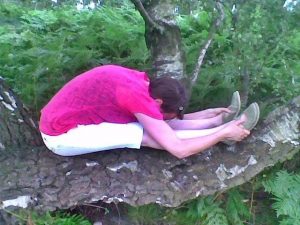Relaxation is literally about letting go. Nevertheless this needs to happen on three levels for us to fully relax. We need to relax on the physical, emotional and mental levels. Once we achieve this the benefits of relaxation are immense.
The benefits of relaxation
The benefits of true and deep relaxation include:
- more energy
- less ‘dis-ease’ and illness
- fewer aches and pains
- stronger immune system
- more resilient/able to cope with stress
- calmer and more confident
- happier, more content and more fulfilled
People often want to relax to move away from feeling on edge, tired or exhausted. However developing the ability to relax on each of these levels means that we can actually use relaxation as a route to achieving our goals in life. This might include performing at our best under pressure, being more creative, being a better leader.
We don’t know how to relax
But how funny is it that when you tell someone to ‘relax’ or ‘chill out’ – perhaps because they look stressed – they have no clue as to how to do this. Good coaches or yoga teachers never tell someone to ‘relax’. If the person knew how to do this they wouldn’t be in class! Instead we show them techniques and behaviours they can use to achieve this for themselves.
The secret to relaxation
The secret to relaxation is letting go. Letting go of tension, letting go of effort. At every level – physical, emotional and mental. Interestingly this can be achieved through the breath. Specifically through the exhalation. The exhalation is used in yoga asana work to move deeper into a posture or for the more strenuous postures: deep forward bends, strong backbends, twists are all moved into on the out breath. Somehow the body is more ‘forgiving’ on the exhalation; stretches are allowed more and are somehow facilitated.
Exhalation is letting go
The exhalation is letting go because, unlike the inhalation, the out breath does not require muscular effort. To exhale simply requires a letting go of effort. So the intercostals, scalenes, trapezius etc – the key muscles of respiration – simply relax to allow the rib cage to relax. And the diaphragm, the king of respiration muscles, can let go of its hold on the lumbar spine and relaxes upwards and the air leaves the body through the natural process of letting go. The exhalation is passive: it requires no effort. It is simply a surrender to gravity.
Breathe out to relax
We can use the exhalation to relax and release in the body, which will help the mind to relax. As the body can relax into strong stretches on the exhalation, so the exhalation can be used to release tension in the body. The breath is the bridge between the body and mind: as the body releases so follows the mind.
In addition, by prolonging the exhalation we can activate the parasympathetic nervous system (the relaxation response) by enhancing vagal nerve activity. This slows the heart rate and increases heart rate variability (HRV) thereby calming and relaxing the whole body-mind system.
The opposite of relaxation is anxiety and worry. And the most amazing thing about the exhalation is that it can be used to reduce and even eliminate anxiety. It is the best technique for anxiety disorders.
Read more about breathing and breathing practices here


